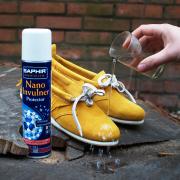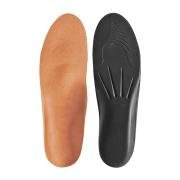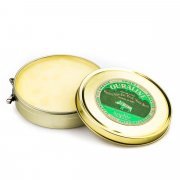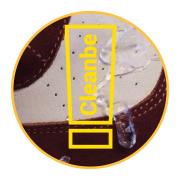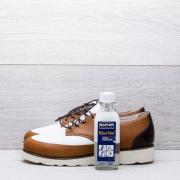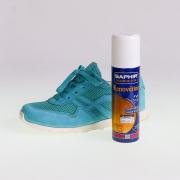Instructions for the care of shoes
Preamble
History of shoes begins around the late Paleolithic period (35 - 12 thousand years ago). As compared with other garments it has changed over the past century not quite significantly. The first shoes most likely have been made of leather. Also, on a par with the leather have been used tree bark, reed, papyrus, bast, straw as well as rough thick yarn, felt and even wood. In the United States, in a cave Lamos (NV), archaeologists found 300 pairs of braided grass sandals. Despite its age - 9000 years - they were nice looking and comfortable. What makes us sure to say - quality pair of shoes in our time can withstand more than one season, of course provided a proper care of it.
Prepare the shoes
Take out the laces and the insoles. The laces are washable by hand, in warm water or in a special bag in the washing machine. Insoles wipe with a damp sponge or wash in cool water with soap. Dry them at a temperature not exceeding 40° C (104° F), away from heating appliances. Finally, you can begin to cleanse itself of shoes. First, the sole laundered with soap and then with brush remove the jammed mud. Next, determine the material from which shoes are made of, and proceed.
Smooth leather
Perhaps the type of used leather. It is called so because the front surface of the leather retains the natural pattern. Under the smooth leather is understood all of the leathers, the surface of which has undergone minimal processing, or not processed at all. It accepts the leathers of the highest quality, without defects. This is the most expensive type of leather.
Cleaned with a soft brush. If shoes are deeply stained, use a mild soap solution, then wipe the surface of the leather with a damp cloth soaked in water and wrung out sponge. Use to wash shoes warm water (not hot!). Wipe off shoes by cotton cloth or paper towel.
Leather shoes, in the absence of specific, non-destructive footwear dryers, should be left drying slowly at room temperature in a natural way (about 18-20 ° C (64-68 ° F), away from heating appliances. You should not force up this process and attempt to dry for an hour - it may cause deformation and cracking of the leather.
Saturate the shoes by cream for a natural leather. Choose a quality cream. Usually such a shoe cream packed into a tin can. Make sure that it is composed of natural beeswax and nutrients. A good shoe polish contains natural fats. Allow time for cream to soak leather and to dry, polish it by special brush. Loosen the laces, stuff them tight by newspaper, soft paper or insert pads, so the shoes do not lose its shape.
Keep your shoes in shoe closet or in a spacious box, paving by soft paper.
Suede, velour, nubuck
Care for suede shoes demands the particularly attentive approach. Since the one awkward movement can result in irreparable loss of former luster and novelty.
Before you begin to care for suede shoes, dry it. Then clean away dust and light pollution with a brush. Put special foam for cleaning suede (foam differ in color, but there are also universal) and use a special brush.
You can made cleanser by yourself. Dissolve some soap in the water and add a few drops of ammonia. Foam the resultant solution and apply it on pollution with a sponge. Then, remove the foam with the remnants of mud by clean sponge or soft cloth. If these manipulations are not enough, shoes can be washed in warm water with a sponge and soapy water.
After cleaning, it is necessary to leave the suede shoes to dry. The moisture comes out of the shoe in about 20 hours. In case of suede especially should not hurry and give shoes to dry completely. Raise the fibers of the leather with a crepe brush and apply impregnation in several stages, depending on the manufacturer's recommendations.
Loosen the laces, tamp firmly by the newspaper, soft paper or put the pads (mold carrier). Store in a large box, wrapping soft paper or pack in special bags for storing shoes.
Textile or fabric
In shoe manufacturing various textile materials is widely used - fabrics, knitted fabrics, faux fur, nonwoven fabrics and felting materials as well as threads and textile accessories - ribbon, inkle, cord.
The widespread use of textile materials in the shoe manufacturing is due to its properties: standard forms and dimensions, low weight, high values of air, water and vapor permeability, water absorption, sufficient strength. With increasing thickness and selecting the fibrous composition obtained the materials for winter and house shoes with good insulating properties.
However, textile shoe materials have disadvantage - fast soaking, therefore footwear with textile uppers is unsuitable for wear in wet weather.
Most of the textile shoes can be washed or whether be wiped in water with a soft brush. However it is better to follow the manufacturer's recommendations. Some shoes can be safely washed in a washing machine.
But water is contraindicated for such delicate fabrics like silk and velvet. Water-repellent should not be abused. They may damage the fabric. Leather care products should not be used. It may cause grease stains. Stains from grease, food and other dirt can be removed by conventional stain remover for fabrics.
If you decide to wash your shoes in the washing machine, we recommend you first rinse the shoes from a large mud, remove the laces and insoles. Do not wash more than one pair at a time. Wash at the minimum temperature on the small turns without squeezing and drying, as well as use a special laundry bag for shoes or an old pillowcase.
Leave the shoes in a well ventilated place. Dry, using only special dryers (they are not very hot). If you have not special dryers, use newsprint paper, which must be changed as far as it gets wet.

-500x500.jpg)







